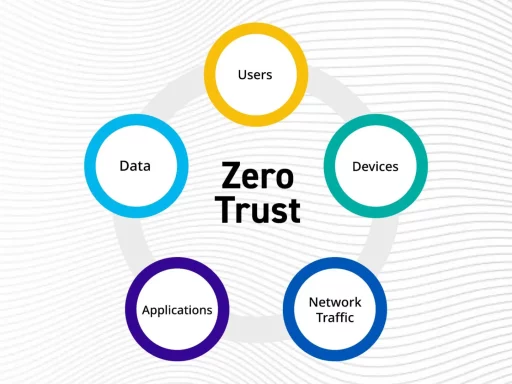In the digital age, cyber threats have become a significant concern for individuals and organizations alike. As technology advances, so do the tactics of cybercriminals. Understanding these threats and knowing how to mitigate them is crucial for maintaining security and protecting sensitive information. This comprehensive guide covers the top 10 cyber threats and provides actionable strategies to mitigate them, ensuring you stay ahead in the ever-evolving landscape of cybersecurity.
Table of Contents
- Introduction to Cyber Threats
- 1. Phishing Attacks
- 2. Ransomware
- 3. Malware
- 4. Distributed Denial-of-Service (DDoS) Attacks
- 5. Man-in-the-Middle (MitM) Attacks
- 6. SQL Injection
- 7. Zero-Day Exploits
- 8. Advanced Persistent Threats (APTs)
- 9. Insider Threats
- 10. IoT Vulnerabilities
- Conclusion
Introduction to Cyber Threats
Cyber threats are malicious activities aimed at disrupting, damaging, or gaining unauthorized access to computer systems, networks, or devices. These threats can lead to significant financial losses, reputational damage, and compromised sensitive information. Being aware of the most prevalent cyber threats and implementing effective mitigation strategies is essential for safeguarding against potential attacks.
1. Phishing Attacks
What is Phishing?
Phishing involves tricking individuals into divulging sensitive information, such as usernames, passwords, or credit card numbers, by posing as a trustworthy entity through email, SMS, or social media.
How to Mitigate Phishing Attacks
- Education and Awareness: Regularly train employees to recognize phishing attempts and report suspicious emails.
- Email Filtering: Implement advanced email filtering solutions to block phishing emails.
- Two-Factor Authentication (2FA): Use 2FA to add an extra layer of security to user accounts.
- Regular Updates: Keep software and systems up to date to protect against known vulnerabilities.
2. Ransomware
What is Ransomware?
Ransomware is a type of malware that encrypts files on a victim’s device, rendering them inaccessible until a ransom is paid to the attacker.
How to Mitigate Ransomware
- Regular Backups: Frequently back up data and store it offline or in a secure cloud environment.
- Anti-Malware Software: Install and regularly update anti-malware software.
- Security Patches: Apply security patches promptly to close vulnerabilities.
- User Training: Educate users about the dangers of opening unknown email attachments and clicking on suspicious links.
3. Malware
What is Malware?
Malware is malicious software designed to damage, disrupt, or gain unauthorized access to computer systems. Common types include viruses, worms, trojans, and spyware.
How to Mitigate Malware
- Anti-Malware Solutions: Deploy comprehensive anti-malware solutions and keep them updated.
- Firewalls: Use firewalls to block unauthorized access to your network.
- User Permissions: Limit user permissions to prevent unauthorized software installations.
- Network Segmentation: Segment your network to contain the spread of malware.
4. Distributed Denial-of-Service (DDoS) Attacks
What is a DDoS Attack?
A DDoS attack overwhelms a network, service, or website with a flood of internet traffic, rendering it inaccessible to legitimate users.
How to Mitigate DDoS Attacks
- DDoS Protection Services: Use DDoS protection services to absorb and mitigate attack traffic.
- Load Balancing: Implement load balancing to distribute traffic across multiple servers.
- Rate Limiting: Apply rate limiting to restrict the number of requests a server will accept from a single IP address.
- Incident Response Plan: Develop and test an incident response plan for DDoS attacks.
5. Man-in-the-Middle (MitM) Attacks
What is a MitM Attack?
In a MitM attack, an attacker intercepts communication between two parties to eavesdrop or alter the information being exchanged.
How to Mitigate MitM Attacks
- Encryption: Use strong encryption protocols (e.g., TLS/SSL) for all communications.
- Secure Wi-Fi: Avoid using public Wi-Fi networks or use a VPN to encrypt traffic.
- Authentication: Implement strong mutual authentication mechanisms.
- Network Monitoring: Monitor network traffic for unusual patterns that may indicate an attack.
6. SQL Injection
What is SQL Injection?
SQL injection involves inserting malicious SQL code into a query, allowing attackers to manipulate the database and access unauthorized information.
How to Mitigate SQL Injection
- Input Validation: Validate and sanitize all user inputs.
- Prepared Statements: Use prepared statements and parameterized queries.
- Web Application Firewalls (WAFs): Deploy WAFs to filter out malicious queries.
- Regular Audits: Conduct regular security audits of your code and database.
7. Zero-Day Exploits
What is a Zero-Day Exploit?
A zero-day exploit targets previously unknown vulnerabilities in software, for which no patch or fix is available at the time of the attack.
How to Mitigate Zero-Day Exploits
- Patch Management: Apply patches and updates as soon as they are available.
- Threat Intelligence: Stay informed about emerging threats and vulnerabilities.
- Network Segmentation: Isolate critical systems to limit the impact of an exploit.
- Endpoint Protection: Use advanced endpoint protection solutions to detect and respond to suspicious activities.
8. Advanced Persistent Threats (APTs)
What are APTs?
APTs are prolonged and targeted cyber attacks where attackers gain unauthorized access to a network and remain undetected for an extended period to steal data or cause disruption.
How to Mitigate APTs
- Continuous Monitoring: Implement continuous network monitoring to detect unusual activities.
- Multi-Factor Authentication (MFA): Use MFA to add additional layers of security.
- Least Privilege: Apply the principle of least privilege, granting users only the access they need.
- Regular Audits: Conduct regular security audits and penetration testing.
9. Insider Threats
What are Insider Threats?
Insider threats involve malicious or negligent actions by employees, contractors, or other trusted individuals that compromise security.
How to Mitigate Insider Threats
- Access Controls: Implement strict access controls and monitor privileged accounts.
- User Behavior Analytics: Use analytics tools to detect abnormal behavior patterns.
- Security Training: Regularly train employees on security policies and practices.
- Whistleblower Policies: Establish and promote whistleblower policies to report suspicious activities.
10. IoT Vulnerabilities
What are IoT Vulnerabilities?
Internet of Things (IoT) vulnerabilities arise from the insecure design and implementation of connected devices, making them susceptible to attacks.
How to Mitigate IoT Vulnerabilities
- Device Management: Implement strong device management practices, including firmware updates.
- Network Security: Use network segmentation to isolate IoT devices from critical systems.
- Strong Authentication: Require strong, unique passwords for all devices.
- Encryption: Encrypt data in transit and at rest to protect sensitive information.
Conclusion
Cyber threats are continuously evolving, and staying informed about the latest threats and mitigation strategies is essential for protecting your digital assets. By implementing the best practices outlined in this guide, you can significantly reduce the risk of falling victim to cyber attacks. Stay vigilant, keep your systems updated, and prioritize cybersecurity in every aspect of your digital operations.
For more in-depth resources and updates on cybersecurity, visit CISA’s Cybersecurity Resource Center and SANS Institute. Stay safe online!





